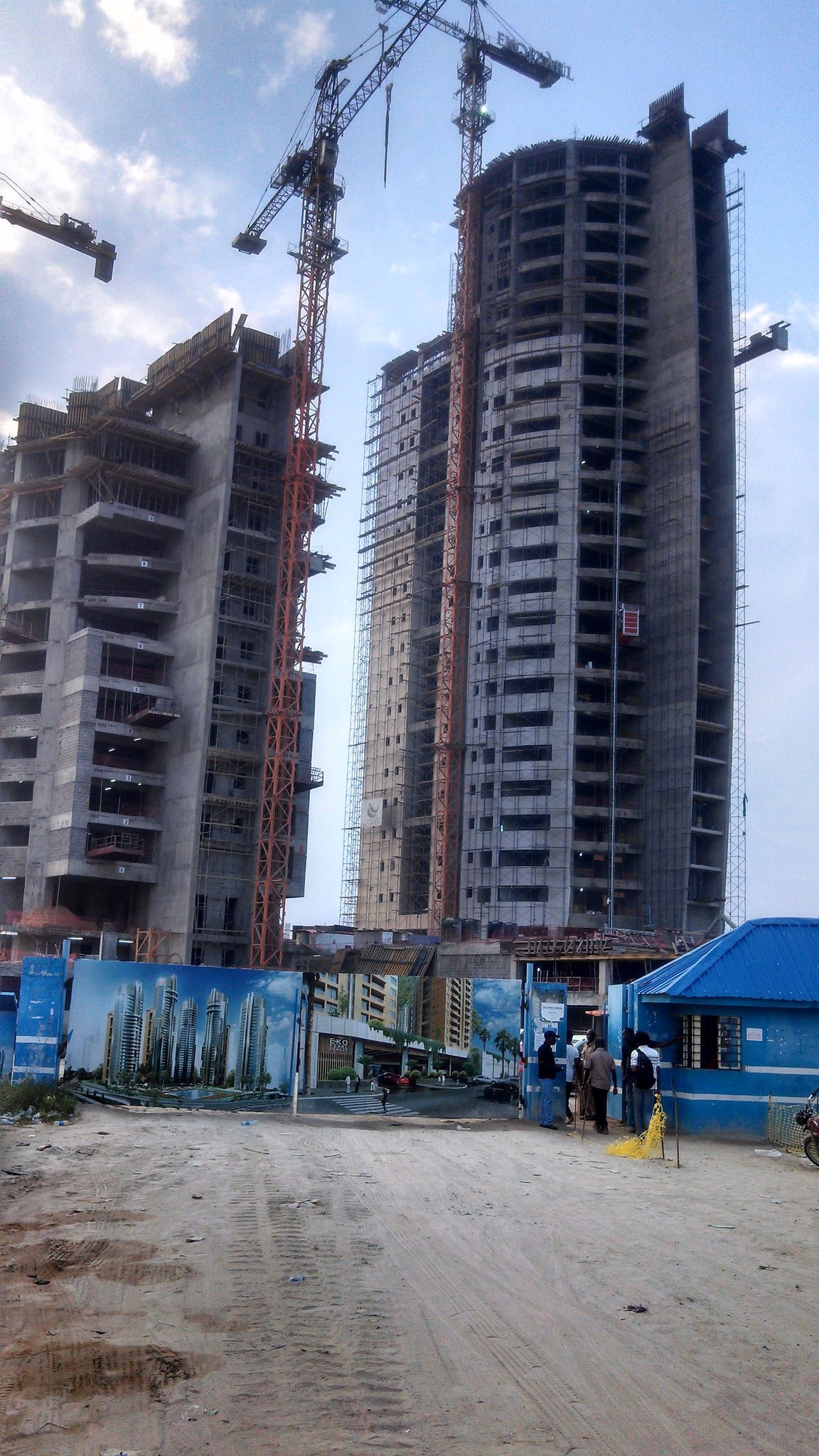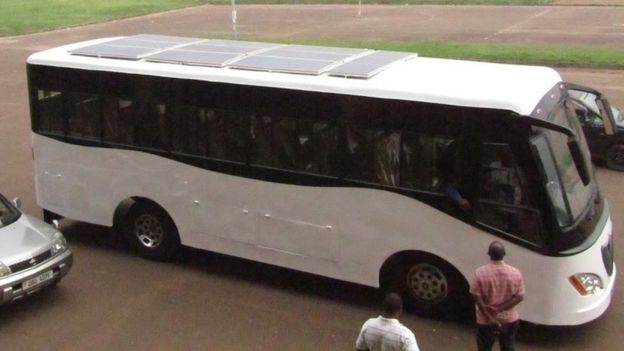newworldafro
DeeperThanRapBiggerThanHH
No different than of these other supranational government ideas like the European Union ......... it's neither totally good or totally bad....it's some many details...
I've been wanting to visit Africa for a minute, particularly English speaking cities like Accra; Nairobi, Mombasa, and Lagos. Which major English speaking city in Africa has the most blacks owning restaurants; resorts, clubs, and/or various businesses.
@NYC Rebel @Azul @mastermind @PewPew @bdizzle @Don Drogo @Robbie3000
I would imagine all of them. Nairobi has a good night life. Particularly if you know someone there. Mombasa and Malindi has a lot of nice resorts. And of course there are a lot of places to go on Safaris throught Kenya.
AbujaI've been wanting to visit Africa for a minute, particularly English speaking cities like Accra; Nairobi, Mombasa, and Lagos. Which major English speaking city in Africa has the most blacks owning restaurants; resorts, clubs, and/or various businesses.
@NYC Rebel @Azul @mastermind @PewPew @bdizzle @Don Drogo @Robbie3000
Oh those 3 cities you listed, which one has the most blacks owning clubs; restaurants, and, clubs?

Abuja

if you wanna watch national team, just check the FIFA calendar for Nigeria to see when they play World Cup Qualifiers.Just saw pics of the football stadium, I'm sure it's live as fukk to catch a game there.
What time of the year can I catch games there?
The next 35 years: Nigeria and South Africa may not be Africa's biggest economies. Who will?
16 Jan 2016 15:06Christine Mungai
1.2k2484
“South Africa will not get back on top. Nigeria will have strong competition and by 2050 may have an economy smaller than DR Congo and Ethiopia.”

Nigeria President Muhammadu Buhari and South Africa's Jacob Zuma. Are both nations living their last years at the top as Africa's economic powerhouses? (Photo/ Carl Fourie/Gallo Images)
SOUTH Africa had a very tough 2015, as global – and local – forces seemingly conspired to knock the wind out of the country’s lungs. First, the global commodity price collapse linked to a slowdown in the Chinese economy has made a big dent in South Africa’s export revenues.
China is a major consumer of South Africa’s mining exports, but has had to cut down its order book as it tries to rebalance its economy.
Making things worse is the worst drought in more than three decades. Some parts of the country have been declared disaster areas, thousands of livestock may have to be killed, and the government is spending about 350 million rand ($25 million) on emergency measures.
And internally, social unrest has gripped the country in 2015, from the student protests that begun at Rhodes University early in the year and culminated in the #FeesMustFall protests, to a spate of xenophobic attacks in April. As the year came to a close, there were more protests against perceptions of increasing government corruption, and President Jacob Zuma’s highly controversial sacking of Finance Minister Nhlanhla Nene.
As South Africans watch with dismay as the country’s sovereign credit risk hover close to junk level, could this all be a passing cloud? Is there a chance that the country will regain its top spot as Africa’s biggest economy? Nigeria knocked off South Africa as the continent’s largest economy last year, with the rebasing of its economy to $521 billion.
Carlos Lopes, executive secretary of the UN’s Economic Commission for Africa (UNECA), doesn’t think so.
“South Africa will not get back on top,” said Lopes categorically in an extensive interview with Mail & Guardian Africa.
READ INTERVIEW: Peering into the crystal ball; Africa in the next 85 years, according to a leading economist
The reason for this possibly is two-fold, according to Mail & Guardian Africa analysis. First, there is a quiet but hugely significant trend happening in Africa at the moment, for which South Africa is a relative outlier – demographic change.
Over the next 35 years, more than half of the world’s births will happen in Africa. It means that over the same time period, the region’s working age population is expected to triple to 1.25 billion people. With the right policies in place, this could be harnessed into increased savings and investments, and booming economic growth.
Nigeria, for example, will see its working age population grow from 51.5% of the total population in 2015 to 58.4% in 2050, according to latest projections (pdf) by the UN’s Department of Economic and Social Affairs.
But over the same time period, South Africa will see its working age population (age 15-59) grow by just 0.3 percentage points, from 63% to 63.3%. South Africa’s demographic transition into smaller, and relatively more prosperous families, began earlier than in the rest of sub-Saharan Africa. It means that there is less room for growth.
Financial markets
The other major challenge holding South Africa back is structural. The country has an enormous amount of capital concentrated in its financial markets – data from the World Bank shows that the market capitalisation of the financial markets is nearly three times larger than the country’s actual Gross Domestic Product.
That gives it a market capitalisation-to-GDP ratio that is the third largest in the world; only Hong Kong and Switzerland have relatively larger capital markets. Some of this is accounted for by large overseas companies cross-listing on the Johannesburg Stock Exchange, but even so, the financial sector’s size is remarkable for a country of South Africa’s size and population.
It means that there is less incentive to invest in the real economy, or create real jobs, because investors can live comfortably off the interest accrued by their financial assets.
Still, Nigeria, even with its rosy headline economic figures, huge population and massive potential, also mask deep structural flaws in the economy that might make it choke on growth soon.
“Nigeria will have strong competition and by 2050 may have an economy smaller than DR Congo and Ethiopia,” says Carlos Lopes. Nigeria’s Achilles Heel is in its lack of power.
Nigeria produces just 1.5% of the electricity it needs for its 173 million people. Exasperated Nigerians dubbed the Power Holding Company of Nigeria the “Please Hold Candle Nearby” company; over 70% of running costs go to running fuel generators alone, and industries retain slow, outdated manual processes because they don’t have the power to run machines.
Without radical reform – and if oil revenues have hit a permanent slump – Nigeria will not be able to function as a modern economy, and may just become a de facto village, though still hulking in size. The impact on the continent of having such a giant grinding to a halt could be far-reaching.
Meanwhile, DR Congo’s potential is immense. The DR Congo’s total mineral wealth is estimated to be worth a mind-boggling $24 trillion, more than the GDP of Europe and the US combined.
It holds more than 70% of the world’s coltan, used to make vital components of mobile phones, 30% of the world’s diamond reserves and vast deposits of cobalt, copper and bauxite. Additionally, the DR Congo contains huge quantities of gold, platinum, oil, tin and uranium — indeed, of nearly every other precious mineral on the planet.
Lighting up
And the planned $80 billion Grand Inga Dam, if finally constructed, will be massive: Producing 40,000 megawatts when complete, it will be capable of literally lighting up the continent, providing electricity to half of African countries.
Currently, the world’s largest hydropower plant is the Three Gorges Dam across the Yangtze River in China, delivering 22,500 Megawatts — Grand Inga will be nearly double the size.
But DR Congo is plagued by instability, so may not take its place at the top of Africa’s economic pile any time soon.
That leaves Ethiopia. At nearly 100 million, the country is Africa’s third most populous, and has posted blistering economic growth in the past decade or so. More importantly, it is fast closing the infrastructure gap, laying down a flurry of roads, railways and power projects, which would give it a competitive advantage in the region, particularly over DR Congo that is notoriously poorly connected.
DR Congo is the eleventh-largest country on Earth by area (2.3 million sq. kilometres) and the 19th largest by population (73 million people), but has less than 3,000 km of all-weather paved road, which would be barely enough to cross the 2,500 km-wide country in any direction, let alone service its population.
Making things worse is that only half of that paltry amount of all-weather road is in good condition. Cars are useless, trucks break down constantly and can be stuck for days, weeks, or months. This leaves bicycles as the main method of land transportation in the DRC - and no country ever became a regional superpower on bicycles.
Ethiopia also has the advantage of an efficient bureaucracy and stable, if authoritarian political regime, though this could prove to be a liability in the future as people demand more political space.
Analysts are also warning that Ethiopia’s mega-infrastructure binge will put enormous pressure on Ethiopia’s public finances, which are already strained following the first growth and infrastructure plan that expires this year.














